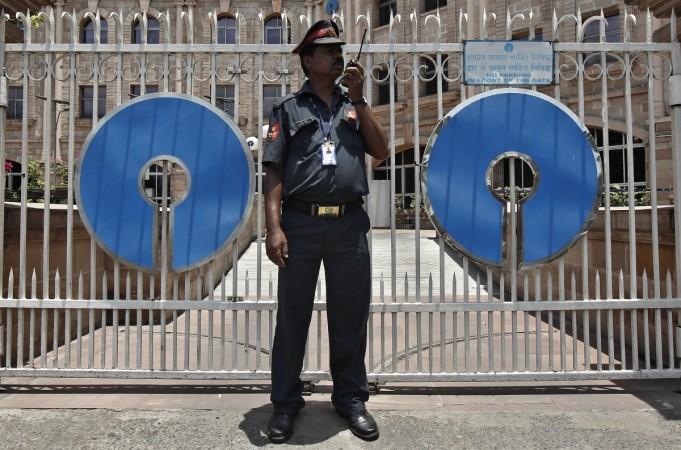
The Indian banking system stands on the threshold of one of its most transformative decades since liberalization. In the coming year, the sector will be tested not merely by cyclical economic pressures but by profound structural changes: a wave of next-generation GST reforms, the rapid adoption of Artificial Intelligence (AI), evolving consumer debt patterns, and a shifting geopolitical-financial order.
If the banking crisis of 2008 was about global contagion and 2016 about demonetization and digital payments, 2025 will be remembered as the year when banks were forced to reinvent themselves as intelligent, resilient, and ethically governed institutions. The stakes are high: India's ambition to become a $5 trillion economy by FY 2027 depends directly on the efficiency, stability, and innovation capacity of its financial institutions.
A slow squeeze: Margin compression in an easing cycle
The Reserve Bank of India's decision to cut the repo rate by 50 basis points, accompanied by a liquidity infusion equivalent to ₹2.5 lakh crore, has been celebrated by borrowers but has cast a shadow over banks' profitability. Fitch Ratings recently warned that net interest margins (NIMs) could shrink by 10 basis points in FY 2025–26, a small figure on paper but significant in a sector where margins are already slim.
"Banks with improved fee income will fare better,"—Rajneesh Karnatak, MD & CEO, Bank of India.
Public sector giants like SBI, whose Q4 earnings reflected a dip in net interest income, face sharper pressures compared to private players such as ICICI Bank and HDFC Bank, which enjoy greater diversification. In Q3 FY 2024, SBI reported a NIM of 2.72%, while ICICI and HDFC were at 4.38% and 4.1%, respectively.
Without intervention, margin compression could erode the sector's collective capacity to fund India's ambitious infrastructure push. The only sustainable response lies in dynamic asset-liability management, AI-powered repricing models, and a pivot towards fee-based income streams such as wealth management, insurance, and digital payments.
The silent storm: Retail and MSME credit risks
The headline numbers on bad loans paint a deceptively calm picture. India's gross NPA ratio is at a comfortable 2.3%, its lowest in over a decade. Yet beneath this surface calm lies a storm brewing in retail and MSME portfolios.
Household debt has surged to 43% of GDP, while the national household savings rate has plunged to its lowest point in 50 years. A recent Financial Times investigation warned that defaults in unsecured retail lending could rise to 5–6% under stress scenarios, posing systemic risks.
Small businesses are equally vulnerable. With GST compliance costs, fluctuating demand, and thin margins, many MSMEs are trapped in a precarious balance between survival and insolvency.
Here, AI offers a lifeline. By analyzing behavioral spending patterns, geospatial transaction data, and real-time GST filings, banks can deploy early warning systems to predict defaults before they occur. Such proactive risk management, coupled with cash-flow-based underwriting rather than asset-based collateral models, will be crucial in keeping the MSME engine running.
Next-gen GST reforms: Opportunity and risk
India's sweeping GST realignment, announced this month, has been hailed as a major reform milestone. By reducing multiple tax slabs to just two, with luxury and sin goods excluded the government aims to stimulate consumption and simplify compliance ahead of the festive season.
For banks, however, the implications are complex. While consumer spending will rise, benefiting retail credit and payments, working capital cycles could become more volatile as businesses adjust to new refund timelines and compliance processes. This is particularly relevant for sectors like FMCG, automobiles, and pharmaceuticals, where input tax credits form a significant part of operational liquidity.
Forward-looking banks will need to design GST-linked financial products:
Short-term credit lines timed to GST refund cycles.
Collateral models that recognize GST receivables as securable assets.
Sector-specific dashboards to model tax policy impacts and provision accordingly.
Artificial Intelligence: The defining force
The RBI Governor's recent call for banks to adopt AI in grievance redressal was not merely a suggestion but a signal of urgency. Over 10 million complaints were filed by Indian bank customers last year, a staggering figure that reflects systemic inefficiencies.
Global consultancy EY estimates that Generative AI could boost banking productivity by up to 46%, yet only 11% of Indian banks have scaled AI deployments beyond pilots. The gap between potential and reality is stark.
"AI will not replace banks, but banks that fail to embrace AI will be replaced by those that do"—Ashish Kakar, IDC Asia-Pacific.
AI's immediate applications are already visible:
HDFC Bank's chatbot "Eva" now handles 2.7 million customer queries per month, paving the way for fully conversational banking.
ICICI Bank's iPal processes 6 million interactions with 90% accuracy, significantly reducing call center loads.
But AI's role goes far beyond customer service. By integrating machine learning into fraud detection, credit scoring, regulatory reporting, and portfolio optimization, banks can transition from being reactive institutions to predictive, self-healing ecosystems.
Cybersecurity: AI as both weapon and shield
The rise of AI brings with it a darker twin: AI-assisted cybercrime. In 2023 alone, Indian banks reported over 23,000 cyber fraud incidents, with losses exceeding ₹177 crore - a twofold increase from the previous year.
The next frontier of fraud involves deepfakes, synthetic identities, and algorithmic hacking, where traditional defenses are obsolete. Banks must adopt zero-trust cybersecurity architectures, using continuous authentication and anomaly detection powered by AI. Regular AI war-gaming exercises, conducted in partnership with RBI and CERT-In, should become as routine as financial audits.
Equally important is governance. Boards must elevate AI risk to the same level of scrutiny as credit and operational risk, appointing Chief AI Risk Officers (CAIROs) to oversee resilience metrics.
The human cost of AI transformation
The narrative of AI in banking often focuses on efficiency and profitability, but there is a hidden human cost. A study by IIM Bangalore revealed that ICICI Bank's deployment of AI-driven lead scoring, which boosted sales leads by 23%, also resulted in a 14% increase in employee hypertension levels due to relentless performance pressure.
Banks must recognize that human well-being is a strategic asset. Ethical AI design, employee retraining, and mental health support programs should be integral to every transformation roadmap. Otherwise, the sector risks becoming technologically advanced but socially fragile.
Public vs. private sector: Tale of two futures
The digital divide between public sector banks (PSBs) and private counterparts is widening. While ICICI Bank and Axis Bank experiment with fintech partnerships and innovation hubs, many PSBs remain burdened by legacy IT systems and bureaucratic inertia.
Yet PSBs play a critical role in financial inclusion and rural credit delivery. A collaborative model, where private banks share AI infrastructure and sandboxes with PSBs, could ensure that technological progress benefits the entire ecosystem rather than creating a two-tiered financial system.
Vision 2026: From transactions to trust
India's banking sector has reached a historic inflection point. The coming year will test its ability to balance innovation with stability, efficiency with empathy, and growth with ethics.
The pathway forward rests on five imperatives:
1. Marginal Mastery: Harness AI to optimize margins and expand non-interest income streams.
2. Smart Credit: Move beyond collateral-based lending to dynamic, data-driven risk models.
3. AI Ethics: Govern technology with transparency, fairness, and human-centered design.
4. Cyber Resilience: Treat AI-enabled cyber defense as a national security priority.
5. Inclusive Innovation: Bridge the private-public digital divide through shared platforms.
As India aspires to be a global financial powerhouse, its banks must evolve from transactional intermediaries to strategic guardians of national trust. In this era of machine-speed finance, success will not be measured merely by quarterly profits but by the sector's ability to build enduring confidence among citizens, businesses, and the world.
My final reflection
Sir William Francis Butler once wrote, "The nation that will insist upon drawing a broad line of demarcation between the fighting man and the thinking man is liable to find its fighting done by fools and its thinking by cowards." Replace "fighting" with "banking," and the message resonates profoundly today.
India's banks must become both thinkers and doers, technologically bold, ethically grounded, and strategically visionary. The future of India's economy depends on it.
[Major General Dr Dilawar Singh, a Ph.D. with multiple postgraduate degrees, is a seasoned expert with over four decades of experience in military policy formulation and counter-terrorism. He has been the National Director General in the Government of India. With extensive multinational exposure at the policy level, he is the Senior Vice President of the Global Economist Forum, AO, ECOSOC, United Nations. He is serving on numerous corporate boards. He has been regularly contributing deep insights into geostrategy, global economics, military affairs, sports, emerging technologies, and corporate governance.]















